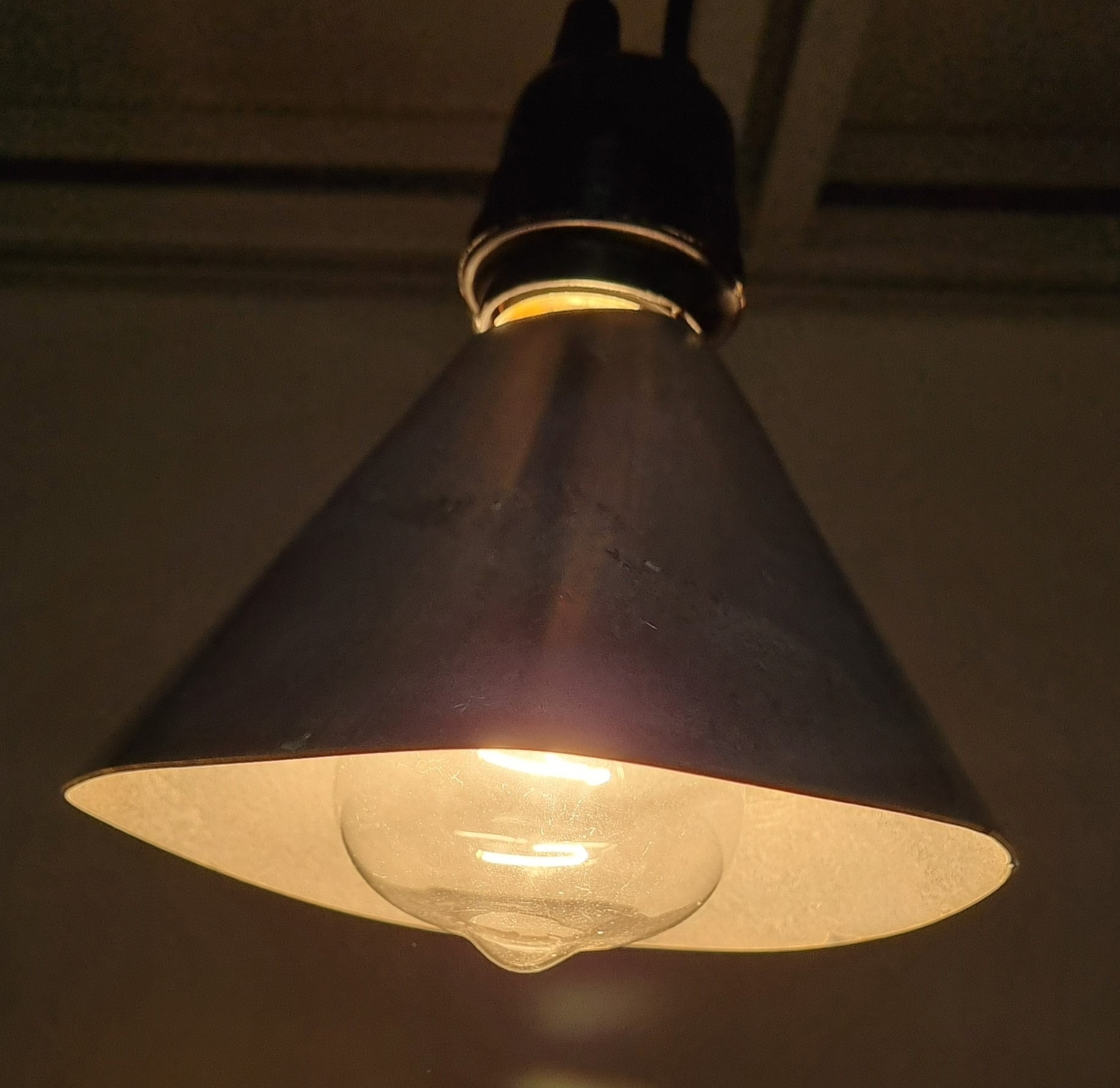Indoor air pollution might have met its match. Researchers will report that they have developed catalyst-coated lampshades that convert indoor air pollutants into harmless compounds. The lampshades function with halogen and incandescent light bulbs, and the group is expanding the technology to be attuned to LEDs.
 A lampshade coated with a catalyst uses heat from an incandescent bulb to destroy indoor air pollution. Image Credit: Minhyung Lee
A lampshade coated with a catalyst uses heat from an incandescent bulb to destroy indoor air pollution. Image Credit: Minhyung Lee
The scientists will establish their findings at the fall meeting of the American Chemical Society (ACS). From August 13–17, ACS Fall 2023, a hybrid meeting, will be held in person and virtually. It features around 12,000 presentations on a broad range of science topics.
The lampshades focus on volatile organic compounds (VOCs), accounting for a majority of indoor airborne pollutants, as per Hyoung-il Kim, PhD, the principal investigator of the project. These compounds comprise formaldehyde and acetaldehyde. Cleaners, paints, air fresheners, furniture, plastics, cooking, and other sources release them.
Although the concentration of VOCs in a home or office is low, people spend more than 90% of their time indoors, so the exposure adds up over time.
Hyoung-il Kim, PhD, Principal Investigator, American Chemical Society
Conventional methods to remove VOCs from indoor air rely on activated carbon or other types of filters, which have to be replaced periodically.
Minhyung Lee, Graduate Student, Kim’s Lab, Yonsei University
At the ACS meeting, Lee will present the team’s work. Other devices have been developed which break down VOCs using thermocatalysts activated by high temperatures or photocatalysts that react to light. However, Kim highlights that most such units require an individual heater or an ultraviolet (UV) light source, which can generate unnecessary byproducts. His team aspired to take a more straightforward method that would only need a visible light source that generates heat—like an incandescent or halogen bulb—and a lampshade coated with a thermocatalyst.
Halogen bulbs transform just 10% of the power they employ into light, with the other 90% being converted into heat, as per Lee. Releasing 5% light and 95% heat, incandescent bulbs are even worse. “That heat is typically wasted,” Kim adds, “but we decided to use it to activate a thermocatalyst to decompose VOCs.”
In a paper published last fall, the team reported that they had synthesized thermocatalysts composed of titanium dioxide and a tiny amount of platinum. The scientists coated the interior of an aluminum lampshade using the catalyst and kept the shade more than a 100-watt halogen bulb in a test chamber that consists of air and acetaldehyde gas.
Switching the lamp on heated the shade to around 250 °F warm enough to activate the catalysts and decompose acetaldehyde. During this oxidation process, the VOC was initially transformed into acetic acid, formic acid, and ultimately CO2 and water. Both of the acids are harmless, and the amount of CO2 released is mild, Kim highlights. The scientists also discovered that formaldehyde can be decomposed in the same conditions and that the technique functions with incandescent bulbs.
“This was the first demonstration to utilize waste heat from lamp sources,” Kim states. Most past research projects, and some lamps on the market, have rather depended on light-activated photocatalysts to damage indoor air pollution.
In its recent work, Kim’s team is turning to cheaper alternatives for platinum. The group has disclosed that new copper- or iron-based catalysts can break down VOCs. Besides, copper is a disinfectant, so Kim expects that the copper catalyst is able to kill airborne microorganisms.
Now, the researchers are searching for ways to expand the pollution-destroying lampshade concept to LEDs, a fast-growing lighting market segment. Contrary to incandescent and halogen bulbs, LEDs expel too little heat to trigger thermocatalysts.
Hence, Kim’s group is developing photocatalysts that are activated by the near-UV light released by LEDs and other catalysts that convert part of the LEDs’ visible light output into heat.
Our ultimate goal is to develop a hybrid catalyst that can utilize the full spectrum produced by light sources, including UV and visible light, as well as waste heat.
Hyoung-il Kim, PhD, Principal Investigator, American Chemical Society
The study is funded by the National Research Foundation of Korea; Ministry of Land, Infrastructure and Transport; Ministry of Environment; and Ministry of Trade, Industry and Energy.